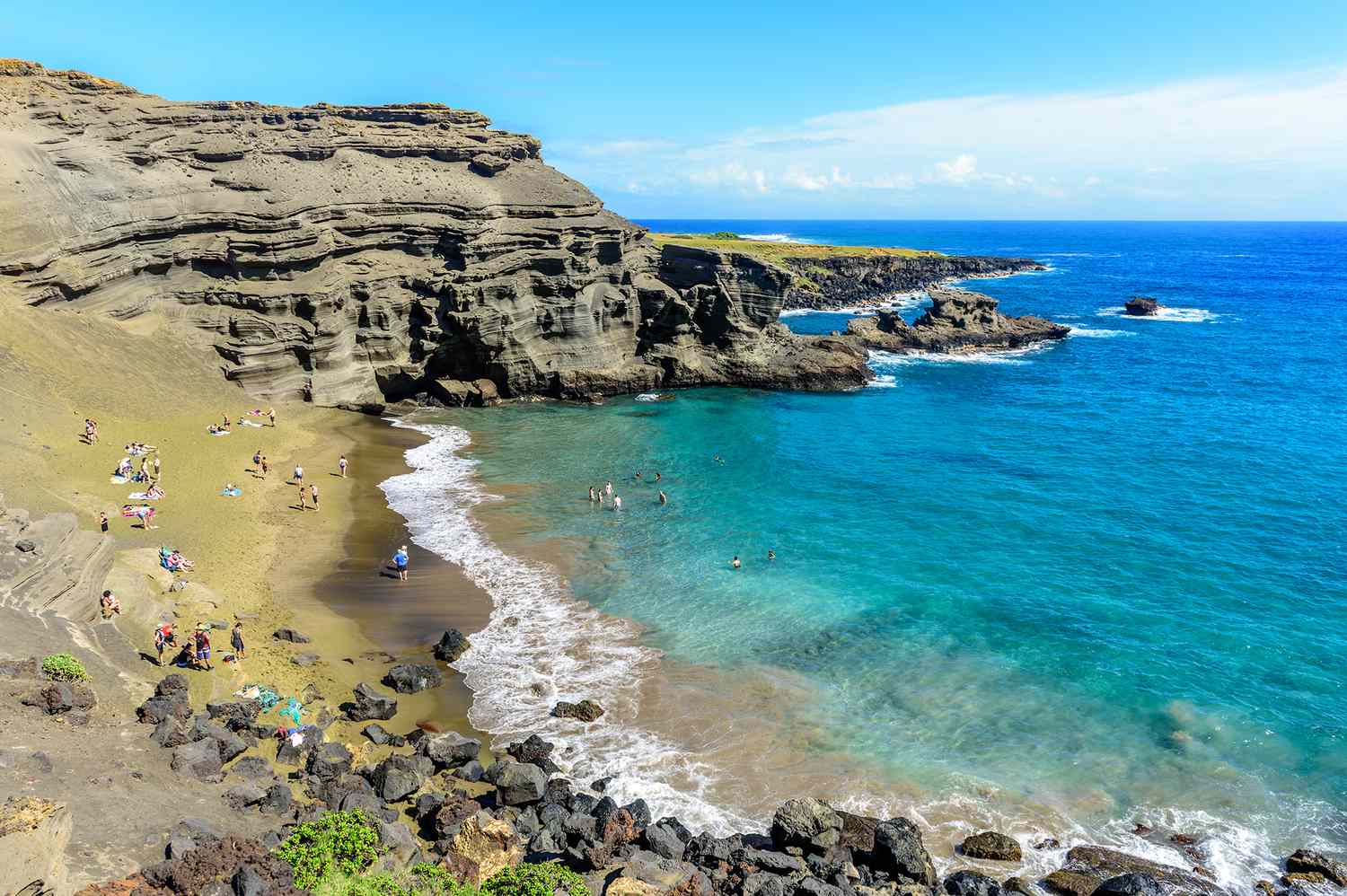:max_bytes(150000):strip_icc():format(jpeg)/TAL-papakolea-beach-hawaii-GREENSANDBEACH0925-85aa61a42e63487a86ed18abd23b04ea.jpg)
Papakōlea Beach isn’t your typical beach. Commonly referred to as “Green Sand Beach,” the stretch of shoreline on the Island of Hawaii (the Big Island) is said to be one of only four green-sand beaches in the world. It’s also the only one located in the 50 U.S. states. To reach the others, you’ll need to book flights to Norway, Guam (a U.S. island territory in Micronesia), and the Galapagos Islands.
But if you ever find yourself in the Ka Lae, or South Point, area in Hawaii’s Kaʻū district—the southernmost region of the island—you’ll want to make it a point to venture to Papakōlea Beach, also called Mahana Beach. Instead of white sand, black sand, or even popcorn sandthe beach has sand with a distinctive green color.
While you might assume the interesting hue comes from algae or some sort of plant, you’d be mistaken. The green color actually comes from something called olivine, known as the “Hawaiian diamond.” Olivine is a mineral primarily found in igneous rocks (rocks created through the solidification and crystallization of molten rock) that are rich in magnesium and iron.
Papakōlea Beach sits inside the Pu’u Mahana tuff cone, which was formed by the Mauna Loa volcano eruption around 49,000 years ago. As the cone eroded over time, olivine crystals became concentrated in this area. And because olivine is heavier than volcanic sandit tends to stick around as other particles are taken out to sea. Even now, thousands of years later, you’ll find all different shades of green on the shore.
In order to reach this naturally occurring wonder, you’ll need to prepare for a relatively strenuous hike. If your base camp is in Kailua-Kona, you’ll drive about 1.5 to two hours south on Highway 11. When you reach mile marker 69, you’ll turn onto South Point Road and drive for about eight more miles until you reach the beach’s parking area. According to Big Island Guidethere is a sign that will point you down to the beach.
Before you begin the final leg of your journey to Papakōlea Beach, put on your sturdy shoes, slather on sunscreen, and ensure you have plenty of water in your bag. You have about a 2.5-mile hike along a rugged trail—expect a decent amount of wind, as well—down the edge of Puʻu Mahana tuff cone. From there, you’ll head down a steep path to the very bottom of the beach. Yes, you’ll have to hike those 2.5 miles back, too.
Take plenty of pictures, but keep in mind that it’s illegal to take sand from any of Hawaii’s beaches. Leave the beach exactly how you found it (that includes taking out any trash you may have accumulated), so other travelers seeking out the famous Green Sand Beach will find it just as magical and pristine as you did.





